Matador Network's Blog, page 437
August 3, 2022
Rockford, Illinois, Is an Outdoor Haven Perfect for a Weekend Escape From Chicago
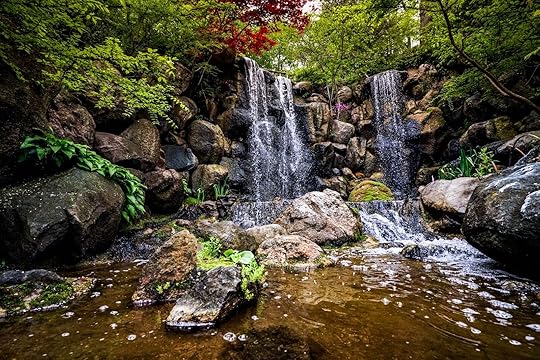
The largest city in Illinois outside of the Chicagoland area, Rockford offers beautiful landscapes and plenty of family-friendly adventures that make it a great destination for people who love the outdoors. The city and Winnebago County have more than 10,000 acres of protected recreational land, as well as 42 forest preserves for hiking, camping, fishing, and kayaking. It’s no wonder Rockford’s nicknames are Forest City and City of Gardens.
If you’re looking for a Midwest vacation where you can immerse yourself in the great outdoors, here’s how to make the most of Rockford, Illinois.
What to do in Rockford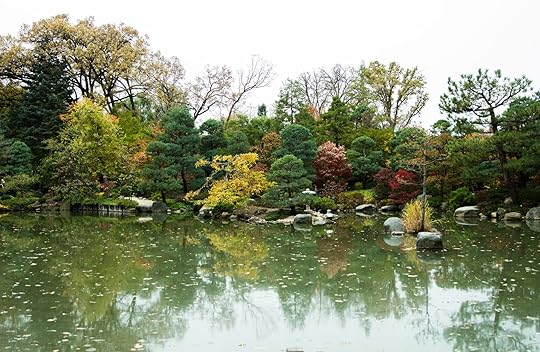
Photo: Ana S. Chao/Shutterstock
Anderson Japanese Gardens: What started as a backyard project for the Anderson family is now one of the top Japanese gardens in the United States. It’s tucked into a hillside near the Rock River, and offers 12 acres of stunning landscape to take in. There are streams, waterfalls, trees, shrubs, flowers, and winding pathways to explore. Don’t forget to snag a bag of fish food before heading out on your garden walk — the koi in both of the property’s ponds are eager to greet you while they snack.
This is also a great spot for brunch with a lovely view overlooking the property. Fresco in the Garden has a brunch menu with options like chorizo and egg hash, salmon Oscar, and a fruit and yogurt parfait served in half of a pineapple.
Rock River Recreation Path: This 10-mile trail runs along the Rock River. It’s a community hub for outdoor recreation, whether you’re walking a dog, going for a jog, or teaching your kiddo how to ride a bike. The path runs from downtown Rockford north to the MercyRockford SportsCore 1 at Loves Park. The grounds just outside of the Nicholas Conservatory are particularly lovely as you can make a pit stop to wander through the stunning rose garden. There are several other spots to stop and play along the way, along with local food trucks.
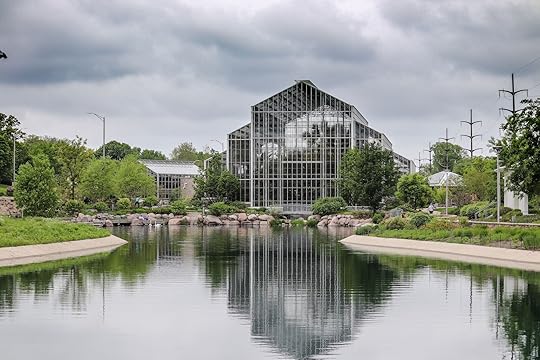
Photo: Jw5 Photography/Shutterstock
Nicholas Conservatory and Gardens: The conservatory is located right next to the Rock River, but one foot inside and you’ll be transported to the tropics. The 11,000-square-foot space is filled with an impressive variety of vegetation that towers to the ceiling. There are orchids, palms, lipstick plants, papaya trees, and elephant ears bigger than a child. There are also relaxing water features, benches, and sculptures, making it a wonderful spot for quiet reflection. The eclipse lagoon outside (keep your eyes out for the resident swans) connects the conservatory to the nearby Sinnissippi Rose Garden.
Atwood Park Silent Sports Trail System: Several years in the making, this trail system will feature some 20 miles of interconnected trails on both the north and south sides of the Kishwaukee River when fully complete. The trails are multi-use (hiking, biking, and cross-country skiing) but are perhaps best loved by bikers — especially those with fat tire bikes. The trails weave through the woods and wind up and down the hillside, along ravines, and across the prairie. Be sure to check out the trail guide before heading out to find the right difficulty rating of the route to match your skill level.
View this post on InstagramA post shared by W E S T R O C K (@westrockwakepark)
West Rock Wake Park: You don’t need a boat to wakeboard or water ski in the heart of Rockford. Thanks to the cable pulley system set up at Levings Lake, you can hop in the water, hold on, and go. The course is great for every skill level and age, with a training course for beginners and a more advanced loop course for people who are more experienced and want to hit the jumps. Reservations are required, so check the website before heading out.
Burpee Museum of Natural History: Fascinating displays of the geological history of Rockford and the surrounding area are on full display here. It’s where you’ll find Jane, the world’s most complete and best-preserved juvenile T. rex. The 21-foot skeleton and surrounding exhibit offer fascinating insights into what the region was like some 66 million years ago. There are three other floors of the museum to explore, including live animals like turtles, snakes, and beetles in the SPROUTS Learning Lab.
Connected via tunnel to the Burpee Museum is the Rockford Art Museum, which has pieces that show a diverse glimpse into Chicago Imagist art and early 19th and 20th century artists all the way up through modern Midwest creators of today.

Photo: Eddie J. Rodriquez/Shutterstock
Rock Cut State Park: On the northeast side of the city about a 20-minute drive from downtown Rockford is Rock Cut State Park. With nearly 3,100 acres of forested hiking trails, two lakes, and 270 campsites to choose from, this is a well-known destination for those looking to appreciate everything about the great outdoors. You can rent bikes and motorboats while in the park. It’s a great spot for horseback riding and wildlife watching. It’s also a prime location for spending time outdoors in cold weather months if you’re interested in ice fishing, cross-country skiing, and ice skating.
Where to eat and drink in RockfordView this post on InstagramA post shared by Prairie Street Brewing Co. (@psbrewingco)
Prairie Street Brewing Company: Situated right on the banks of the Rock River, restoration of the historic brewery building began a decade ago. Today, it offers fantastic ambience for dining whether you’re inside the building or out on the dock. Snag a flight of the craft beer and an order of cheese curds while you decide what to have for your main meal.
Rockford City Market: A favorite summertime tradition in Rockford is the City Market on Friday nights. There are more than 70 vendors and food trucks that set up shop here, most of which offer something tasty to eat or drink. You can try crepes, cake in a cup, vegan treats, cantina tacos, wood-fired pizza, and much, much more. There’s also fresh produce, honey, and cheese as well as handmade items and jewelry. Find a spot under the pavilion in the heart of downtown Rockford and enjoy your market treats and a local brew while listening to live music.
The neighborhood surrounding the market is chock full of locally owned shops with friendly owners. Pop into 317 Art Collective to view an eclectic mix of modern art by local artists. Rockford Art Deli features custom eco-conscious screen-printed t-shirts as well as hats and other branded apparel. 510 Threads is a lovely fashion-forward women’s boutique. And at Bath & Body Fusion you can find locally made bath bombs and body butters galore.
View this post on InstagramA post shared by thenorwegian (@thenorwegianrockford)
The Norwegian: This is a can’t miss spot for breakfast in Rockford. The restaurant’s Nordic design is charming and welcoming, and the food is delicious. Be sure to sample the Æbleskiver (Danish pancake balls served with maple syrup and house-made raspberry jam) and the Swedish cinnamon knot. Plus, the croque madame, sourdough waffles, and salmon and egg are excellent choices to start your day. The Norwegian is also open for lunch and dinner (limited hours and menu), occasionally hosts live music, and has a fabulous pergola-covered patio.
Barnstormer Distillery: A visit to Barnstormer Distillery is like a walk in the park, but with really tasty cocktails. Owners Tim and Addie Ford are as friendly as can be. They’ve created whiskeys, vodkas, rums, and more. You can sample many of the spirits in their new hangar-style bar. Open on Fridays, Saturdays, and Sundays, you can stop by for samples, drinks, and bottle sales. You will also likely find a local food truck, like Batchz BBQ which dishes out delectable barbeque sandwiches and nachos, parked right outside the hanger. Plus, local musicians provide entertainment. The ambience of the whole property is enchanting. The distillery is set on 22 acres, and some of the ingredients for their craft liquors and craft cocktails are grown on the grounds. Make time to wander through the pine trees.
View this post on InstagramA post shared by Octane (@octanerkfd)
Octane: This spot has been a fixture on the Rockford dining scene for some 20 years. The menu blends global cuisine with down home, satisfying meals, all creatively plated. Try out the flavorful selection of baos and ramen dishes or the modern TV dinner. The fried chickpeas and sweet corn elotes are a great way to start your meal. And the espresso martini comes highly recommended.
Gelato Joe’s: If you’re a fan of gelato or sorbet, make a plan to stop at Gelato Joe’s. The creamy flavors are the perfect sweet treat to cap off the day as you savor your choice on the patio under the string lights. Check the flavor list before you go, but you’ll likely find everything from strawberry, raspberry, lemon basil, and pistachio, to velvet caramel vanilla, mocha crunch, and tiramisu.
View this post on InstagramA post shared by Candy Cloud Company (@candycloudcompany)
Candy Cloud: This spot is known for colorful desserts and drinks. What started as a cotton candy stand at the city market has transformed into a store front that whips up coffee drinks and sweet treats right before your eyes. The layered ice cream options are divine, with bits of boba, cake, or doughnut mixed in. The coffee drinks and revivers are caffeine boosts. And the specialty drinks, which change seasonally, are just plain fun.
Where to stay in RockfordWe hope you love the spaces we recommend! Just so you know, Matador may collect a small commission from the links on this page if you decide to book a stay.
Embassy Suites by Hilton Rockford Riverfront: A former cabinet hardware factory has been transformed into a 12-story industrial chic hotel situated on the riverfront in the heart of Rockford. The Riverside Embassy Suites opened in 2020 and offers the perfect spot to stay while in town, and includes a complimentary happy hour and made-to-order breakfast. Make sure to head up to The Top Rooftop Bar & Lounge to grab appetizers and a cocktail. The rooftop offers a stunning panoramic view of the city and is an ideal spot to watch the sunset.
How to get to Rockford, IllinoisRockford is about 90 miles northwest of Chicago. It’s also just an hour south of Madison, Wisconsin, and about an hour and a half from Milwaukee. If you’re looking to travel by air, you can fly into Chicago Rockford International Airport.
How to get aroundRockford is a pretty easy city to navigate. Downtown is walkable on both sides of the Rock River, and by foot is the best way to take in the many colorful murals on the sides of buildings. Bikes are another convenient way to get around, though there’s plenty of parking if you drive. You’ll want to have a vehicle to get to the outdoor destinations beyond those right near the Rock River in downtown. 
I Hike at Least 500 Miles a Year and These Are the Boots I Wear the Most

Living in Colorado, the outdoors is a way of life as much as the craft beer movement that started in the Centennial State. Getting out for an “after-worker” (my colloquial term for a hike, bike ride, paddleboard session, or other outdoor activity squeezed into the late afternoon hours after work and before dinner), is a daily practice for many Coloradans, myself included. I’ve averaged about 75 hikes or roughly 500 miles per year, so I spend a lot of time in hiking boots. I recently tried the Erem Xerocole boots ($169.99), and won’t be hitting the trail without them for the foreseeable future.
Note: I tested the Erem Xerocole men’s boots. Erem also offers a women’s option.
A brand designed for the desertWhat first caught my attention about Erem is the desert-specific design. The Xerocole boots in Almond Bluff are the same sandy brown as the Book Cliffs range that towers above my hometown of Palisade, Colorado.
If you’ve ever hiked in the desert, you know that it can get quite hot. The Xerocole boots are built for the heat, touted for its breathable materials that encourage air circulation, keeping the wearer’s feet cool — much like a car with the windows slightly cracked open.
Adding to the upstart brand’s bonafides, the Xerocole was named the official hiking boot of the Arizona Trail, so you know it’s going to look good and perform well in the desert.
Sustainability is on pointErem hooked me with its promises of sustainability. The Xerocole production process is “biocircular,” meaning the boot is made of sustainable materials that can be reabsorbed by the earth (i.e. decompose) after its useful life. The sole is 70 percent recycled rubber.
The brand is in the process of building the world’s first “Biocircular hiking collection,” which I certainly want to be part of.
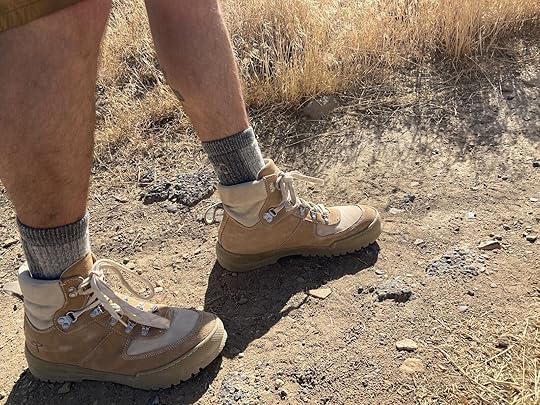
Comfort and performance. Photo: Tim Wenger

Added perk: They wear like Vans, transporting me back to me '90s skater kid roots. Photo: Tim Wenger

Ignore the horrible calf tattoo. Photo: Tim Wenger

The Xerocole blends perfectly with desert surrounds. Photo: Tim Wenger
How do the Erem Xerocole hiking boots perform?I tried the Xerocole boots first on the Palisade Rim Trail’s lower loop, a 3.5-mile, after-work jaunt that gains about 800 feet. The boots felt loose at first andI wasn’t sure if that was by design – perhaps air flowing in from the top was part of the breathing process. I figured not, though, because it was difficult to get a good foothold on the dirt when my ankles kept sliding around. So I pulled the laces tighter and tied a double knot. Problem solved.
On the descent, I noticed that the rubbing and throbbing so common with an out-of-the-box pair of hiking boots was missing. My ankles felt as good as when I’d started, as did my toes. Even the slight bunion on my right foot hadn’t carved an indent into the toebox. Basically, I wasn’t counting down the seconds until I could swap the boots for flip-flops as I often do on these speedy hikes.
This was a feeling I’d never experienced the first time out in a new pair of boots, and remains what stands out the most about their performance. The Xerocole boots are comfortable without “grinning and bearing it” through a 10-mile slog of pain to break them in.

Photo: Quiggyt4/Shutterstock
I then deemed the boots ready for a longer hike. For this, I ventured deeper into the desert of Fruita, Colorado, to the Devil’s Canyon Trailhead for a seven-mile loop out to Pitchfork Tower and back. The temperature on this late-June afternoon was above 90 degrees, and I’d need the boots to perform as well as the water bladder in my backpack in order to mark the day a success. The trail includes rocky stretches and at least two sand patches, plus two small stream crossings, making it a great desert trail to test the boot against all elements.
The Xerocole’s outsole has a thick tread ideal for gripping the curves in rock faces, and the boots excelled at ascending the trail’s rocky stretches; I climbed just shy of 700 feet with ease. The shock-absorbing cork took in the hard rock and soft sand equally well.
The design reminds me of the pair of Merrell hiking boots I’ve had for years, mixed with Vans skate shoes, another brand I’ve long stood by. This rethink of hiking boot design is what gives the Xerocoles their comfort – they perform like boots but wear like shoes, albeit high-top ones with a very thick sole.
By the end of the hike, my feet weren’t screaming for release and I felt like I could have kept hiking for several more miles. The boots lived up to what was promised by Erem. And as a bonus, they match the standard desert-town fashion to the point that swapping them out before grabbing a post-hike drink with friends isn’t necessary.
Tips for getting the most out of your Erem Xerocole hiking bootsXerocoles are high-top boots so leave the short socks at home. Wear hiking socks or at least socks that rise above the top of the boot. This also prevents rubbing on your calf or shin.Tighten the laces as tight as you can get them. The boots are adept at hugging feet if you provide enough support to last through the hike.The bottoms of most hiking pants will perfectly cover the top and tongue of the boots, and in most cases, this actually looks quite stylish (by mountain town standards).I opted for the Xerocole boots in Almond Bluff, but they also come in Caramel Brown and Silver Birch.
More like thisHikingThe 20 Best Hiking Beers, According To 11 Brewers
This Tulum Airbnb Loft Puts You Right in the Jungle
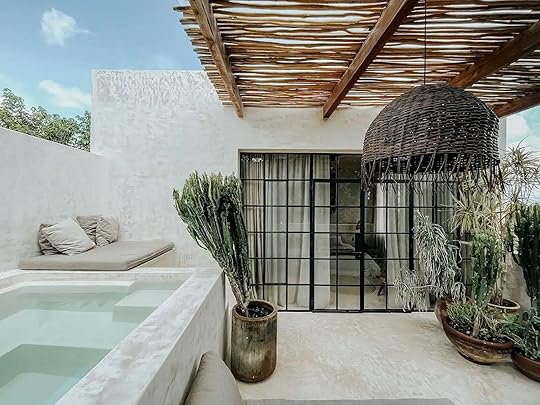
We hope you love the spaces we recommend! Just so you know, Matador may collect a small commission from the links on this page if you decide to book a stay. Listed prices are accurate as of the time of publication.
In Tulum, you’re going to want accommodations that emulate the best of what this beach town has to offer. There are many amazing hotels in Tulum that offer jungle-themed vibes, but if you’re looking for an Airbnb that’s perfect for a group trip, the TikTok account @bucketliststays has found the perfect Tulum Airbnb that will drop you off right in the jungle.
@bucketliststays #stitch with @meirschon Bucketlist #airbnb in Tulum Mexico#tulum #bucketlist #traveltiktok ♬ original sound – Unique Stays Worldwide
This two-bedroom, 2.5-bathroom loft comfortably sleeps five guests. It’s located in the La Veleta neighborhood, which has two cenotes and an amazing culinary scene. The entire loft is decorated in soft whites, natural greenery, and black and wicker accents. Enter from the private entrance after taking in the jungle garden outside complete with a water fountain. Walk into the lobby with a spacious kitchen with wooden cupboards, black countertops, an electric stovetop, and stainless steel appliances. The centerpiece is a long wooden dining room table made from wood in the region with views into the trees.
The open floor plan leads into the living room with a plush oversized corner seating area, or you can offer the pillows on the floor surrounding the coffee table. Floor-to-ceiling windows that are 20 feet high offer lots of natural lighting and at night wicker basket lighting hangs from above.
Both spacious bedrooms are decorated with Earth-tones, but the primary bedroom is extra special, with an entrance that leads out to the rooftop patio. On the rooftop you’ll find a private pool, lots of comfortable seating, and a gorgeous view of the trees up top.
Both bathrooms have luxurious rainfall showers, while the primary bathroom has a soaking tub that’s perfect for relaxing after a long day of excursions.
Bookings for the Piece of Art Loft average at $378 per night. After spending your vacation in paradise, you’ll never want to leave. 
The Coolest Star Observatories You Can Visit in the United States

The United States is packed with astronomical observatories — located on high mountain tops or splayed across a desolate desert. Beyond their beautiful terrestrial settings, many of these observatories have fueled the most important astronomical discoveries of the last century.
The world’s largest on-land optical telescope is at the W. M. Keck Observatory atop Hawaii’s nearly 14,000-foot Mauna Kea peak. However, this US observatory is neither open to visitors nor easy to work into a continental road trip. Rather, this road trip begins in California — where the Big Bang Theory was developed — and takes you across several western states, where a dry climate and tall elevations provide the best observing conditions.
The road trip also includes a handful of eastern observatories. These can be part of your cross-country astro road trip, or you can split your travel into a western and eastern US observatory tour. However you choose to explore, these are the best US observatories you can visit on a trip across the country.
The best observatories in CaliforniaChabot Space & Science Center — Oakland, CaliforniaThe Chabot Space & Science Center is a museum dedicated to space, which also houses three telescopes — so it’s the perfect place to learn about observatories to begin your road trip. You can look through its telescopes for free on clear Friday or Saturday nights between 7:30 and 10:30 PM. The most modern of these, the research-grade 36-inch telescope, offers tremendous night sky views. For its part, the eight-inch Alvan Clark refractor telescope dates to 1883, so it lets you look at the stars as astronomers did 140 years ago.
You can also take in the views of the San Francisco Bay and San Francisco beyond that. Inside the museum you can pilot a rover spacecraft and see an actual Russian Soyuz descent module. While the weekend night telescope viewing is free, the museum costs $20 for adults and $19 for youth and seniors.
Where: 10000 Skyline Blvd., Oakland, California 94619
Lick observatory, Mt Hamilton, California
Photo: Sundry Photography/Shutterstock

Photo: jejim/Shutterstock
The Lick Observatory is located in the San Jose mountains on a site chosen by James Lick, a wealthy businessman who donated to educational causes throughout California. He’s buried under the telescope, which began operations in 1988, a year after his death. Shortly after that Jupiter’s moon Amalthea was discovered here.
Owned and operated by the University of California, one of the observatory’s missions is teaching the public about astronomy — so admission is free (donations are gladly accepted). The outdoor public areas and the Shane Telescope Visitors Gallery are open daily from 10:00 AM to 5:00 PM. The main visitor area is open weekends from noon to 5:00 PM. While there, catch one of the hourly free presentations offered inside the dome of the 36-inch Great Refractor.
Where: 7281 Mount Hamilton Rd., Mount Hamilton, CA 95140
Mount Wilson Observatory — Los Angeles, California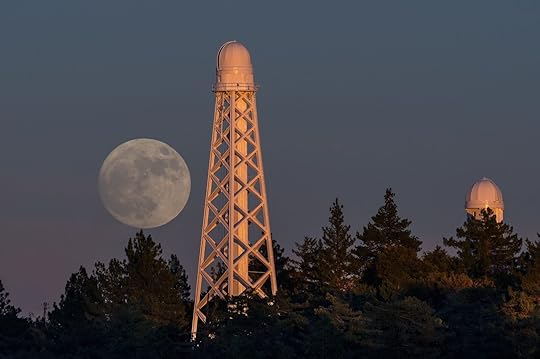
Photo: Angel DiBilio/Shutterstock

Photo: Kit Leong/Shutterstock
For over a century, the Mount Wilson Observatory, at 5,715 feet above sea level, was the world’s most significant observatory. Its first telescope, installed in 1908, was the world’s largest operational telescope. Later, world records were again broken with a 100-inch telescope, which Edwin Hubble began using in 1919. Discovering distant galaxies, combined with data from Arizona’s Lowell Telescope, Hubble was first to postulate the idea of an expanding universe.
The Observatory was also home to the first solar telescope (1905) and, more recently, its largest optical interferometer (2004). Unsurprisingly, one of closest institutions to Mount Wilson Observatory is the NASA-owned Jet Propulsion Laboratory, headquarters of Mars missions of the Perseverance and Curiosity rovers. From JPL it’s a short hop along Foothill Blvd. to Highway 2, which wends up 20 miles to the observatory.
You’ll emerge in cooler, pine-scented air, taking in sweeping views of Pasadena and downtown Los Angeles. You can visit a small Astronomical Museum and look at the famed 100-inch telescope from the Visitors’ Gallery daily from 10:00 AM to 5:00 PM. To see the telescope up close, reserve tickets for two-hour guided tours — offered weekends at 11:30 AM and 1:00 PM. Tickets are $15 for adults and $12 for seniors and kids 12 and under.
Where: Mount Wilson, Los Angeles, CA
The best observatories in ArizonaLowell Observatory — Flagstaff, Arizona
Photo: Lissandra Melo/Shutterstock
The Lowell Observatory was as important as the Mount Wilson Observatory for Edwin Hubble. Here, Vesto Slipher noticed the redshift in light that indicated that galaxies were moving away from us. Hubble put Slipher’s data together with his own to arrive at his idea of an expanding universe — now known as the Big Bang Theory.
Established in 1894 and now a National Historic Landmark, the Lowell Observatory lies on Mars Hill overlooking Flagstaff, Arizona. At 6,900 feet, Flagstaff is much cooler and more wooded than other Arizonian cities. In fact, Olympic athletes train here to take advantage of the high altitude yet mostly mild weather. That said, bring warm clothing when you head up to the Observatory — which is at 7,800 feet and can have snow on the ground.
Tour the 24-inch Clark Refractor, with which Slipher made his momentous observations, the state-of-the-art 24-inch Dyer Telescope, and the telescope used to discover Pluto in 1930. Check the calendar for “Meet An Astronomer” nights, on certain Saturday nights between 7:00 and 10:00 PM. The observatory is open daily from 10:00 AM to 11:00 PM (except Tuesday, when it closes at 5:00 PM). If the sky is clear, you can look up using one of the telescopes on the Giovale Open Deck Observatory.
The General Admission ticket accesses all of the above options, including stargazing, at a cost of $25 for adults, $22 for seniors, college students, and those with a AAA discount. Plan ahead with friends and you could book a private 74-minute viewing for up to 10 people with the Dyer Telescope, for $525. Visit the experiences page for more details.
Where: 1400 West Mars Hill Rd., Flagstaff AZ, 86001
Mount Graham International Observatory — Safford, ArizonaPerched atop Mount Graham at 10,400 feet above sea level, this US observatory is the highest one on your road trip, something to consider when visiting. The squarish white object atop the mountain top looks space-agey indeed — or like a bad guy’s lair in a James Bond film. Its construction less than 20 years ago was controversial, as the site is sacred to the San Carlos Apache tribe and environmental groups decried the impact on local red squirrels.
The observatory is operated by the astronomy department of the University of Arizona, which monitors the health of the red squirrel population, which is apparently still thriving. Of the three telescopes, the Large Binocular Telescope (BLT) has the largest single-piece mirror of any telescope, which has been used by astronomers from Italian, German, and US institutions to observe galaxies billions of light years away.
The Heinrich Hertz Submillimeter Telescope measures not visible light waves, but very short radio waves that it captures in its parabolic antenna. The third telescope is operated by the Vatican Observatory — which the Vatican itself calls one of the oldest astronomical research institutions in the world, dating back to 1582. (Tell that to Galileo, who was denounced for heresy in 1633.)
You can take weekend tours of the observatory from mid-May to mid-October, depending on the weather. The tours begin and end at Discovery Park in Safford, Arizona. The day starts at around 9:30 AM, ending at 4:30 PM. Lunch is included in the $40 per person price. Reserve your spot by calling (928) 428-6260 or emailing discoverypark@eac.edu. Your guide will inform you of the area’s human and natural history and then take you to visit each of the three telescopes.
Where: Eastern Arizona College, Discovery Park Campus, 1651 W. Discovery Park Blvd., Safford, AZ 85546
The best observatories in the SouthwestMcDonald Observatory — McDonald Observatory, Texas
Photo: Jo Hunter/Shutterstock

Photo: Sean Hannon acritelyphoto/Shutterstock
The McDonald Observatory is located atop 6,800-foot-high Mt. Locke in West Texas, just north of Big Bend National Park. It holds five telescopes, the most significant of which is the Hobby-Eberly Telescope. With a mirror measuring 36 feet across, it’s one of the world’s largest optical telescopes and is dedicated to spectroscopy, which involves studying light to determine the composition and distance of distant objects.
You can visit the observatory Tuesday through Saturday from 12 to 5:00 PM. General admission is $3. You can take self-guided tours and participate in a $5 solar viewing program, or join $10 guided tours. Also, check the website to see when you can join a Special Viewing Night using its research-grade 36-inch telescope. The price for that one is $100 per person, while viewing through its 82-inch telescope is $150 per person. It’s not cheap, but seeing Saturn and its rings clearly, for example, is a memory that will last a lifetime.
Where: Frank N. Bash Visitors Center, 3640 Dark Sky Drive, McDonald Observatory, TX 79734
Karl G. Jansky Very Large Array — Socorro, New Mexico
Photo: William Cushman/Shutterstock

Photo: Sarmiento Photography/Shutterstock
The Karl G. Jansky Very Large Array, or VLA, is a different type of astronomical observatory in two ways: instead of using our human eyes aided by a telescope to observe light waves in the visual spectrum, it uses satellite dishes to capture waves that we cannot see. In this case, it is capturing short radio waves. It’s named for Karl Jansky, who in 1933 discovered radio waves coming from distant stars in the Milky Way.
Moreover, the VLA doesn’t listen for radio waves with just one telescope but in fact twenty-seven of them, each one measuring 82 feet across. The telescopes cover a huge area, lined up in three 13-mile long arms emanating from the center. By looking at one object and working in unison, these radio telescopes in fact function like one huge telescope.
Currently, the VLA is closed to visitors, but it should soon resume twice monthly tours. In the meantime, it is still worth driving by to see the array of satellites pointed skyward. Old Highway 60 crosses right through the complex.
Where: Socorro, NM 87825
The best observatories in the eastern USLeander McCormick Observatory — Charlottesville, Virginia
Photo: Leander McCormick Observatory

Photo: Leander McCormick Observatory
The Leander McCormick Observatory is named for the wealthy patron who was determined to have the world’s largest telescope housed in his home state of Virginia. The 26-inch telescope, which began observations in 1882, ended up being only the second-largest telescope by the time it was completed. At least the observatory built to house the telescope was the world’s tallest when it was finished in 1884.
Operating by the University of Virginia, the observatory made ground-breaking observations, such as that of Venus crossing the sun. Its measurements of distances to the hundreds of nearby stars shaped the earliest calculations about the size of our galaxy.
The UVA campus is widely considered one of the country’s loveliest, a worthy visit on its own merits. On either side of its central lawn are the tiny, bare-boned rooms that Thomas Jefferson designed as student accommodations. (One of them remains open as a historic model). Never mind that you have to walk outside to use the bathroom; these are the most coveted student accommodations. From this central lawn it’s just a 30-minute walk uphill to the most historic observatory in the South.
Where: 600 McCormick Rd., Charlottesville, VA 22904
Green Bank National Radio Observatory — Green Bank, West Virginia
Photo: John M. Chase/Shutterstock

Photo: Zack Frank/Shutterstock
Just a couple of hours’ drive up into the forested mountains from Charlottesville lies one of the most unusual towns in the US: Green Bank. Like Arizona’s VLA, the Green Bank National Radio Observatory uses parabolic telescopes to “hear” radio waves. These telescopes are what we use, for example, in the search for intelligent life, or SETI — to which the Green Bank Observatory dedicates part of its telescope hours. The Byrd Green Bank Telescope (GBT) is the largest fully steerable radio telescope on Earth.
While radio observatories benefit from operating 24 hours a day, the radio signals coming from the edge of the universe emit less than a billionth of a billionth a watt. A mobile phone, on the other hand, can emit 10 watts. So that these ancient star signals not be engulfed by modern gadgets, the National Radio Quiet Zone was created. It’s a 13,000-square-mile area that prohibits cell phones, microwaves, and even FM radio.
Seven telescopes dot the fields surrounded by the gently sloped Appalachians. At 2,700 feet above sea level, Green Bank is pleasantly cool, even in mid-summer. You could try hiking around here, but remember that there’s no GPS or cell phone signal if you get lost. Green Bank brings together an unusual mix: the scientists and engineers who work at the observatory and the self-described “electro sensitives.” The latter group have come to the radio quiet zone to avoid electro-magnetic frequencies that they say make them unhealthy.
Vaccinated and pre-registered visitors can tour the Science Center for $5. Better yet, pay $10 and you can include a guided bus tour on your visit. The center is open daily from 10:00 AM to 6:00 PM and bus tours depart on the hour. Note: Since you cannot rely on GPS to arrive at the observatory, please refer to their directions page (and maybe print out a copy) before you go.
Where: 155 Observatory Rd., Green Bank, WV 24944
MIT Haystack Observatory — Westford, Massachusetts
Photo: IVY PHOTOS/Shutterstock

Photo: Jerry Gantar/Shutterstock
Many prominent Northeastern universities operate observatories. MIT’s Haystack Observatory, an hour east of Boston, is one of the most interesting. It houses three radio telescopes tucked into the wooded surroundings. The first antenna you’ll notice is the massive Radio Antenna & Radome, a white geodesic dome completed in 1964 that measures 120 feet across.
The Millstone Hill Incoherent Scatter Radar, which looks like a giant tripod, is the most powerful Earth-based telescope to measure thermal plasma in our atmosphere, while the Westford Radio Telescope is used to better understand our own planet — its shape and location, among other measurements. The fourth telescope, Haystack VLBI Correlator, provides extremely precise measurements related to both our own planet and its distance to other astronomical objects.
If this is all confusing, then sign up now to participate in one of the Haystack Observatory’s twice yearly open houses — on the third Thursday in May and October. (They have been closed due to the pandemic, but stay tuned for updates). You’ll hear lectures on how radio telescopes can teach us about space. The Haystack grounds are free to explore Monday to Friday during 8:00 AM to 5:00 PM, when the car gate is open. Seeing up close the unusual telescopes operated by one of the world’s most important scientific institutions is fascinating, even if you can’t go inside. Otherwise, Haystack suggests calling (617-715-5400) or emailing (info@haystack.mit.edu) with questions about visiting.
Where: 99 Millstone Rd., Westford, MA 01886 
11 Airbnbs In Cabo San Lucas for a Perfect Beach Escape

Cabo San Lucas, Mexico, might be known as a raucous destination for spring breakers. But, outside this peak season, the resort delights with its natural scenery and mellow vibe. Glorious beaches, watersports, and golfing mean that the southernmost tip of Baja California Sur has something for everyone. Besides, Cabo San Lucas beach houses and luxury condos give you the golden opportunity to pick and choose your level of partying. Let’s find the perfect Airbnb Cabo San Lucas for your next escape.
Top-rated Airbnb in Cabo San LucasMost Luxurious Airbnbs in CaboCabo San Lucas beach housesCabo Airbnbs with chef serviceCabo San Lucas Airbnb condo rentalsWe hope you love the Airbnb Cabo San Lucas vacation rentals we recommend! Just so you know, Matador may collect a small commission from the links on this page if you decide to book a stay. Listed prices are accurate as of the time of publication.
Top-rated Airbnb in Cabo San LucasVilla Isla – luxury with 180-degree Pacific views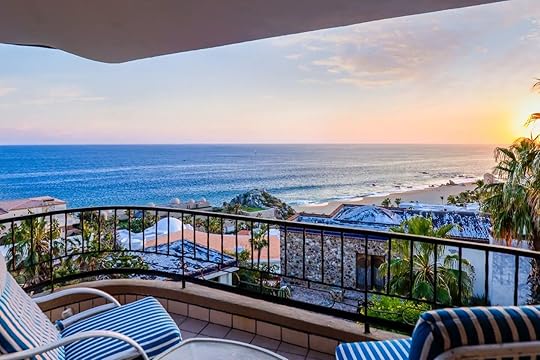
Photo: Airbnb
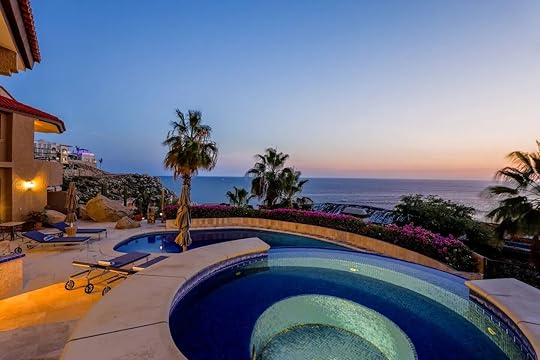
Photo: Airbnb

Photo: Airbnb

Photo: Airbnb

Photo: Airbnb
This dreamy villa is located in an exclusive gated community in the flashy Pedregal neighborhood. This hillside colonia provides epic ocean views and benefits from being private and quiet. Spanish-style in design and decor, the house is spread over two floors and provides the hope of catching sight of whales. The backyard of our favorite Airbnb in Cabo has the luxury of a pool, hot tub, and fragrant blooms.
Twelve guests, four bedrooms
Price: $1,200 per night
Cabo San Lucas is synonymous with beachfront luxury. What isn’t as widely publicized are the breathtaking mountain views and easy access to nature that Cabo offers. With these luxury Airbnbs is Cabo, you’ll experience everything.
Lux ocean view villa with 80′ infinity pool
Photo: Airbnb

Photo: Airbnb

Photo: Airbnb

Photo: Airbnb
This knockout five-story villa is carved into the cliffs of Pedregal and comes with a saltwater infinity pool, hot tub, gym, garden, and multiple terraces. On breezier evenings, you can light up the fire pit and get a tournament going at the billiards table. Everything down to the linens and countertops is of superior quality. This Cabo Airbnb with chef service (available at a surcharge) includes breakfast and housekeeping in the base rate.
Sixteen guests, seven bedrooms
Price: $3,070 per night
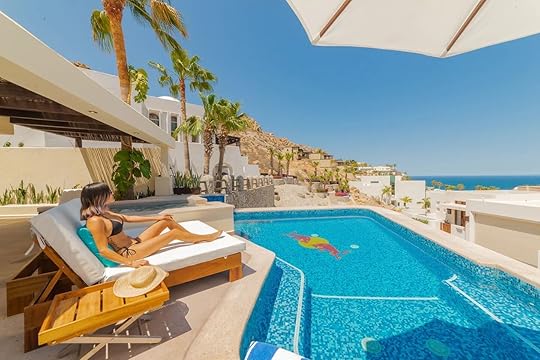
Photo: Airbnb

Photo: Airbnb

Photo: Airbnb

Photo: Airbnb
This summery Cabo vacation rental is tastefully appointed with neat modern rooms and immaculate bathrooms. Sonos speakers are fitted in every single room and there’s an al fresco bar next to the pool for sociable evenings. For those lazy evenings where you need the simple pleasure of a movie and a mountain of popcorn, head to the home theater. The cook at this Cabo Airbnb with chef is highly recommended.
Twelve guests, six bedrooms
Price: $990 per night
Taking a trip to Mexico? Check out Matador’s Mexico accommodations guides:The best Airbnbs in and around Mexico City’s historic center8 La Condesa Airbnbs to settle into Mexico City’s coolest neighborhood8 stunning Polanco Airbnbs in the city’s most international neighborhoodGrab Your Crew and Book These Oaxaca and CDMX Airbnbs for Dia de Los MuertosThese Top-Rated Tulum Airbnb Rentals Put You Right Near the Beach11 Cancún Airbnbs for an Unforgettable Beach VacationCabo San Lucas beach houses
Visit the beach, and then stay at the beach. That’s the mantra of these Cabo San Lucas beach houses for rent on Airbnb. Stay steps from the sand with all the luxury amenities.
Casa Bruma – beachfront with hydromassage Jacuzzi
Photo: Airbnb

Photo: Airbnb
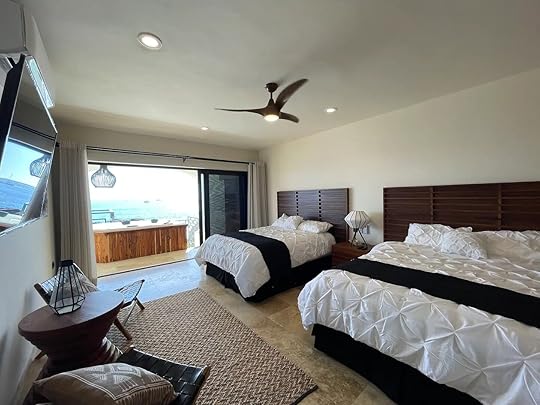
Photo: Airbnb

Photo: Airbnb
Located in the Cabo Bello colonia, this swanky modern beach rental provides direct access to the sand. After exhausting yourself in the ocean and beyond, leap into the spa bath with hydromassage elements and catch the epic sunsets that grace Cabo. This pet-friendly Airbnb Cabo San Lucas features an open-plan living space and generously-proportioned bedrooms.
Ten guests, three bedrooms
Price: $590 per night
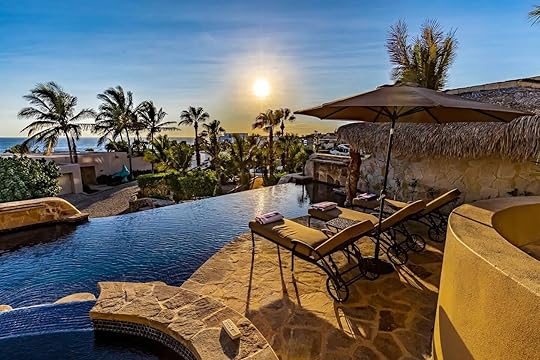
Photo: Airbnb

Photo: Airbnb

Photo: Airbnb

Photo: Airbnb
This deluxe Cabo San Lucas beach house is equipped with an infinity-edge pool and separate hot tub. Concierge services and housekeeping are included while the hosts are on-hand to organize chefs, grocery deliveries, and at-home spa treatments. Less than 20 steps from Pedregal Beach, the elevated property enchants with panoramic ocean views.
Eight guests, four bedrooms
Price: $1,190 per night
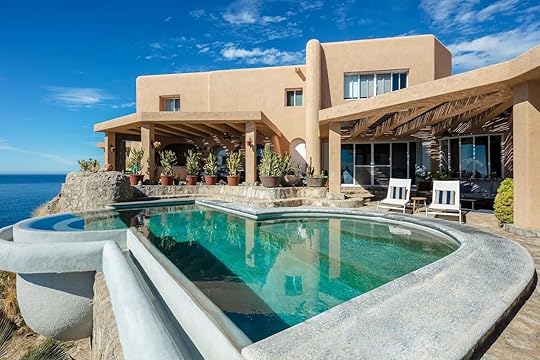
Photo: Airbnb

Photo: Airbnb
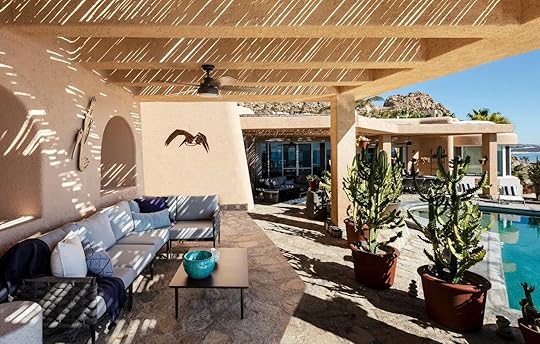
Photo: Airbnb

Photo: Airbnb
Clinging dramatically to the Pedregal cliffs, this glamorous Airbnb Cabo San Lucas features panoramic windows and a pool with a view. Contemporary interiors are softened with oak ceiling beams, colorful artwork, and a well-stocked family kitchen. When you’re not sunning yourself on the terrace or beach, the house includes an expansive fitness suite, game rooms, and an outdoor ping pong table.
Twelve guests, six bedrooms
Price: $2,150 per night
You’re doing the traveling, why not leave the cooking to a professional? These Cabo Airbnbs come with a private chef who does all the shopping in order to prepare the best possible meals for you and your crew.
Cabo Beach view – bartender, chef, and maid included
Photo: Airbnb
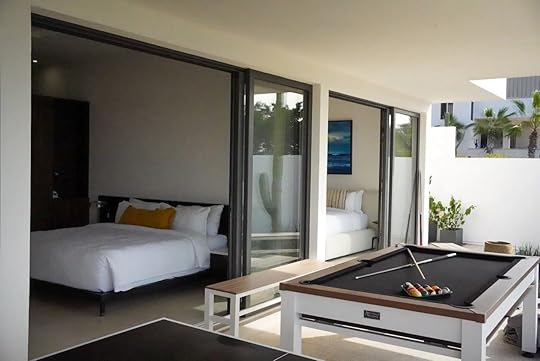
Photo: Airbnb

Photo: Airbnb

Photo: Airbnb
Spanking new and sublimely decorated, this Cabo Airbnb with chef and bartender services invites you to embrace the A-list lifestyle. The rental is kitted out with a pool, hot tub, games room, mini golf course, gym, and sauna. As much as you may feel disciplined to leave, the house is perfectly placed for accessing the beach, marina, and downtown.
Twelve guests, four bedrooms
Price: $1,820 per night
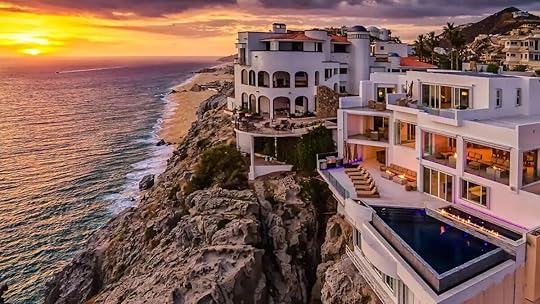
Photo: Airbnb
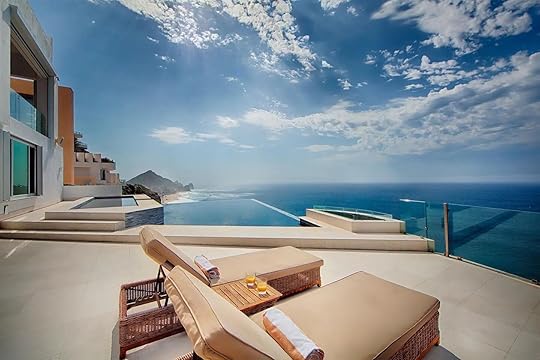
Photo: Airbnb

Photo: Airbnb

Photo: Airbnb
This oceanfront Cabo Airbnb with chef dazzles with its panoramic views, premium amenities, and gourmet menus. Each of the seven guest rooms comes with an en suite while additional sleeping space is available in the pool house. A tiered swim deck comprises the scenic infinity pool and 10-person hot tub. Fire pits line the terrace for warmth or coziness for long evenings under the stars with a pitcher of mezcal.
Sixteen guests, seven bedrooms
Price: $3,740 per night
Just because you aren’t booking through a mega-resort doesn’t mean you have to sacrifice the amenities of a luxury condo. These Cabo San Lucas Airbnbs offer all the trimmings, plus the security of AirCover protection.
Luxury condo – private rooftop and Jacuzzi
Photo: Airbnb

Photo: Airbnb

Photo: Airbnb

Photo: Airbnb
This Airbnb in Cabo Marina is within easy walking distance to the main dining, nightlife, and entertainment hotspots downtown. The vacation home is fully self-contained with a complete kitchen and a spacious roof terrace with a hot tub. As a guest of the complex, you can make use of the shared gym facilities. Ideal for small families and couples alike.
Four guests, two bedrooms
Price: $500 per night

Photo: Airbnb

Photo: Airbnb
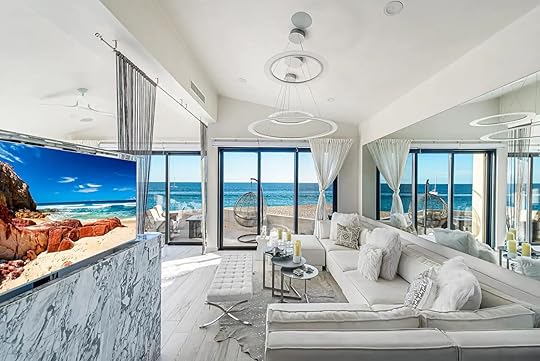
Photo: Airbnb

Photo: Airbnb
This elegant Cabo San Lucas beach house condo is designed for couples and honeymooners seeking the perfect union of tranquility while being moments away from the downtown action. Interiors are uniquely conceived with funky art, vintage touches, and a lavish spa bath. Located in Land’s End, the balcony overlooks the beach. Rental of the unit permits the use of the communal pool.
Two guests, one bedroom (studio)
Price: $380 per night
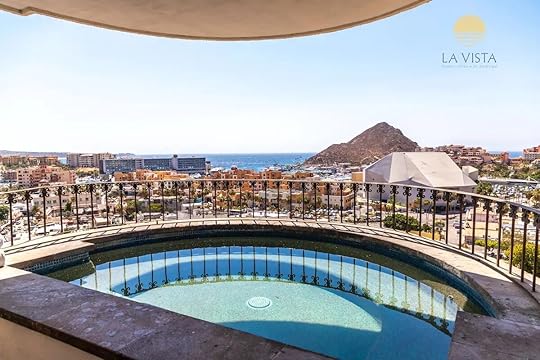
Photo: Airbnb
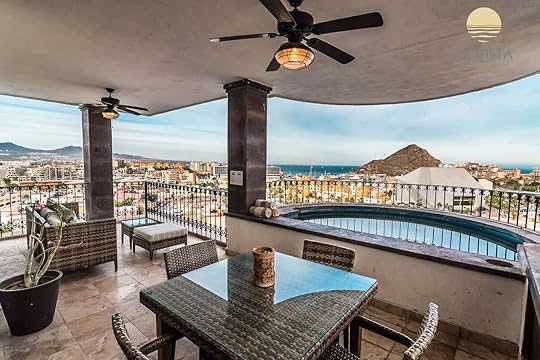
Photo: Airbnb

Photo: Airbnb

Photo: Airbnb
This downtown Airbnb in Cabo lets you take stock of the ocean, city, and mountains from the balcony. The space is fashionably crafted with a homely lounge where you can put your feet up and welcome a gentle sea breeze in the evenings. Out on the terrace, a plunge pool and fire pit are set up to capitalize on the location. During your stay, you’ll have access to the shared pool and gym at the condo block. 
Four guests, two bedrooms
Price: $300 per night
A Bicycling Guide To the Trails and Roads of Mississippi

Here in Mississippi, a burgeoning network of cycling routes can take you through some of the the state’s most pleasant landscapes — as well as some of America’s greatest stories. When the weather is right, the best way to see the Magnolia State is on two wheels, warm breeze in your face as the trail leads you from the pages of William Faulkner to the ballads of Jimmy Buffett and B.B. King. Read on for nine Mississippi bicycling routes to seek out on your trip.
1. Tanglefoot Trail
Photo: Visit Mississippi
This flagship rails-to-trails path runs for 43.6 miles from New Albany to Houston, surrounded by the faint foothills of the Appalachian Mountains. It’s a ride through the eras as well — significant players in history like Meriwether Lewis and Civil War Union troops followed this very trail in their march through history. Start the day in New Albany before resting your bones at Trailhead Bike and Bed, a bicycle-friendly bed and breakfast, at the end of the line.
2. Bayou Point Mountain Bike TrailSwitchbacks and singletrack await at Bayou Point, where those pedaling the 5.6-mile loop toward the shores of Arkabutla Lake are rewarded with dusty thrills and maybe even some wildlife sightings. This rugged North Mississippi mountain bike park is located within reach of Oxford, Clarksdale, and Memphis — a perfect pairing for a day on the trails and a night on the town.
3. Mississippi River TrailRide alongside the Mississippi via the Great River Road — a designated national scenic byway where some sections are closed to cars — on the Mississippi River Trail. This 3,000-mile route runs from Minnesota to Louisiana; in the Magnolia State, it snakes from the Mississippi Delta to the Louisiana state line en route to the Gulf of Mexico. Overnight in Vicksburg to soak in the laid-back nightlife on cobblestone streets, and make a pitstop in historic Natchez for breathtaking views atop the river bluffs and a heartfelt look at the region’s history.
4. Natchez Trace
Photo: Visit Mississippi
Cycle beneath canopies of hardwood forests on one of the oldest transportation routes in North America — the Natchez Trace predates the Declaration of Independence. It spans some 444 miles and crosses into Tennessee, but one of the most popular legs is Rocky Springs to Port Gibson, not too far south of Vicksburg. Make time for the detours to see the haunting columns of Windsor Ruins and to explore the multi-use path around the Ross Barnett Reservoir. Consider basing in Ridgeland, where access to both the Trace and “the Rez” is at your fingertips (or toe clips).
5. Elvis Presley TrailTake a 6-mile self-guided bike tour through charming Tupelo and step into the not-too-distant past. Every half mile or so, you’ll come across a location relevant to the life of the King of Rock n’ Roll. Stops on the Elvis Presley Trail include the King’s former junior high school and his favorite swimming hole, plus 12 more.
6. Mt. Zion Bike TrailsThe state’s most popular singletrack loop, a fast-flowing ribbon of dirt geared to experienced riders, is at Mt. Zion Bike Trails, about an hour south of Jackson. You’ll find 40+ wooden features including see-saws and bridges, testing your skills while offering serious thrills. Otherwise, expect to ride ample climbs, descents, and jumps for 9 miles. Shorter loops are options for younger or beginning riders.
7. Longleaf Trace
Photo: Visit Mississippi
Cruise through the pine forests of southern Mississippi on the Longleaf Trace, which stretches for 44 paved miles from Hattiesburg to Prentiss. This stunning gateway to the area’s music, breweries, and camping streaks under colorful tunnels and through tranquil farmland on a route once used to transport the area’s abundant timber to the mills. Most of the Longleaf’s facilities are located within 15 miles of Hattiesburg, where ample accommodations for cyclists are also available.
8. Pascagoula Historic Bike TrailFor those looking for some coastal scenery, the Pascagoula Historic Bike Trail is a leisurely 10-mile route through the storied streets of the eponymous Gulf Coast city. Cyclists can ride under the shade of lazy live oaks and past the Round Island Lighthouse to the childhood home of Jimmy Buffett. Celebrate the journey by dipping into a local eatery for a traditional feast of shrimp and grits.
9. Mississippi Coastal Heritage TrailExplore the Mississippi Gulf Coast on 101 miles of bike pathways from Bay St. Louis to Pascagoula, taking in everything this region has to offer. The Mississippi Coastal Heritage Trail includes both dedicated bike lanes and shared road spaces that take cyclists to the Biloxi Lighthouse and an abundant array of fresh seafood restaurants, breweries, and places to hear live music. All you need are two wheels and the hankering for an adventure. 
The Two Grossest Parts of an Airplane Seat, According To a Flight Attendant

The pandemic has made many people more conscious of the cleanliness of all parts of transportation. Even though airplanes are equipped with HEPA filters that remove 99.7 percent of germs, and airline carriers were forced to adopt more enhanced cleaning practices, many flight attendants have taken to social media to say you still shouldn’t trust that planes are adequately cleaned. Whether it’s the trash can in the bathroom or laying your head on the window to get some rest, there are some parts of the plane that are less than squeaky clean. Cici, a flight attendant who goes by @ciciintheair on TikTok, recently brought attention to two other grimy places you should think twice about.
@cici_inthesky I have a lot more if you want to hear #flightattendantlife #flightattendant #flightcrew #flightcrewlife #thingsiwillneverdo #lessonslearned ♬ Company background music – TimTaj
The tray table is a germ hotspot, according to Cici. So the next time you get one of those antibacterial wipes as you board, take advantage and wipe it down. You never know how much the cleaning crew actually got to that particular part of the seat. And speaking of food and drinks, Cici echos other flight attendants in her advice to skip the in-flight coffee and tea. It’s easy to understand why — one study found E. Coli in airplane water.
@cici_inthesky Follow me for other ramblings #flightcrew #flightcrewlife #thingsiwouldneverdo #flightattendants #flightattendants #flightattendantstories ♬ original sound – ℂℂ
The other part of the seat Cici advises to avoid is one you might not have thought about: the seatback pocket. In 2018 the Canadian Broadcasting Corporation took more than 100 samples from 18 different flights from carriers Air Canada, WestJet, and Porter between Ottawa and Montreal, according to Insider. The results found that one of the dirtiest places on a plane is the seatback pocket, with samples containing aerobic bacteria, mold, coliforms, and E.coli. A flight attendant on Reddit said she’d found dirty tissues, sick bags, underwear, socks, and half-eaten food. Next time, skip the pocket. You’re better off leaving your items in your carry-on bag. 
The Most Romantic Couples Massages in Las Vegas

A trip to Las Vegas is typically associated with vice, not mental and physical wellness. In fact, those are probably the last two words that come to mind when you think of Sin City. Travelers to Vegas are usually there to drink, gamble, and dance the night away, and while these pastimes are undoubtedly fun, they’re not exactly relaxing. What you may not realize about Vegas, however, is that behind all the glitzy marquees and illuminated signs, Sin City is actually a great wellness destination. You might not think of the city as a “romantic couples retreat,” but its luxurious spas tell a different story. Whether you’re trying to smooth things over with your spouse after losing your retirement savings at blackjack, or celebrating an anniversary, do yourself — and your other half — a favor and book a couples massage in Las Vegas.
1. Sahra Spa and Hammam at The Cosmopolitan
Sahra Spa and Hammam at The Cosmopolitan
Although The Cosmopolitan has a traditional in-house spa, complete with a mystical desert aesthetic, we recommend booking one of the hotel’s Sahra Spa penthouse suites for the ultimate (and intimate) relaxation experience. The suites include a private treatment area with two whirlpool tubs side by side, a steam room, shower, and vanity areas. It’s this cozy and romantic environment that really makes the couples massages here special. Lay side by side as you enjoy one of the spa’s range of options, including a Hawaiian Mana Lomi massage and Sahra Therapeutic Stone Massage.
2. The Spa at Wynn
The Wynn’s contemporary spa manages to be both cozy and luxurious, offering a number of menu options or personalized treatments. The Couple’s Tropical Journey is one of the spa’s romantic offerings, utilizing steamed coconut compresses and rich coconut oil to evoke a tropical island feel. Another is the Couple’s Dessert Stone Indulgence. The spa’s signature Las Vegas massage is the Good Luck Ritual, based on the five traditional Chinese elements. It blends a custom massage with a peppermint foot treatment, hand massage, and botanical scalp therapy. All of the Wynn’s massages can be enjoyed in a private Couples Suite.
3. Palms Wellness and SpaThe Palms couples massage is their best selling treatment. It costs $310, but new clients receive 15 percent off their first massage. If you are in Vegas regularly they also offer a membership which can save you 40 percent. Clients rave about the level of professionalism and welcoming nature of therapists.
4. The Spa at Vdara
The Vdara Hotel is inherently one of the most relaxing and stress-free places in Las Vegas, if only because it doesn’t have a casino. You might not be trying to decompress after a big financial loss, but you should still check out The Spa at Vdara, which offers a range of treatments from nails to massages. Couples can customize their own massage to suit their individual needs, with add-on options like hot stones, aromatherapy, and a collagen lip massage. Couples massages take place in a special Couples Room, and come with two glasses of champagne after the treatment.
5. Spa at The LINQ
The LINQ hotel spa has a special treatment package designed specifically for couples. It includes an 80-minute massage in a designated couples suite, with two treatment elevations of your choice. These elevations include a menu of customizable options: aromatherapy, exfoliating hand or foot treatment, revitalizing foot masques, back exfoliation, muscle pain soother, hot stone therapy, dermaplaning, and brightening eye treatment. Couples massages also come with a bottle of champagne and souvenir champagne flutes to bring home with you.
6. Lapis & Oak Spa and Salt LoungeThe Lapis & Oak Spa and Salt Lounge offer a highly rated couples massage in the comfort and privacy of your hotel room or Las Vegas Airbnb. The perfectly curated Las Vegas massage includes a full body treatment using infused aromatherapy oils and warm Himalayan salt stones. A 50-minute massage costs $300 and an 80-minute session will set you back $380. You can even book your massage in the Las Vegas desert.
7. The Spa at Four Seasons Hotel
The Spa at Four Seasons Las Vegas features oversized couples suites (Spa Dual Suites) where you can enjoy customizable treatments for you and your significant other. You can choose from a range of massages, including a warm salt stone ritual, full body candle massage, and an exfoliating foot massage. Couples massages last between 50 and 100 minutes and also come with a couples facial, chocolate-covered strawberries, and champagne. Also, be sure to take advantage of the spa’s signature Essence of the Seasons — a collection of body treatments that change with the seasons.
8. Canyon Ranch Spa Club at the Venetian
Canyon Ranch Spa Club/Facebook
Rather than just one or two couples massage options, like many spas, the Canyon Ranch Spa at the Venetian Hotel has an entire menu of couples massages. There’s a stone massage using essential oils, a deep tissue massage for a more intense rejuvenation, a couple’s retreat that includes a scalp massage, full-body exfoliation, and scented bath for two, and a seasonal massage incorporating the scents of the season. There’s even a prenatal massage designed for expecting parents.
9. Bellagio Spa and Salon
Defined by its natural aesthetic, mirroring the Bellagio Conservatory and Botanical Gardens, Spa Bellagio offers some of the best spas in Las Vegas for couples. There are a range of spa packages tailored specifically for couples, varying only slightly in treatment time. All packages include a couples massage with either hot stones or aromatherapy, followed by a 50-minute dip in the spa’s Watsu Pool, a private shower, and time in a relaxation space with a bottle of champagne and chocolate-covered strawberries. The Escape Package offers 50-minute massages, the Serenity Package offers 80 minutes-massages, and the Tranquility Package includes 100-minute massages. Who are we kidding, though? It’s really all about the strawberries.
10. Thai Spa and Wellness CenterLocated off The Strip, The Thai Span and Wellness Center is rated one of the best places in Las Vegas for a Thai massage. Although they don’t have a specific couples massage on the menu, the layout of the spa means that you’ll be side by side during your massage — and why not be next to your partner. Thai massages are not traditionally relaxing, but it is one of the best styles of massage for stretching muscles and circulation. And let’s be honest, we’re going to Vegas to get our heart rate racing.
How much is a couples massage in Vegas?Although treating you and your other half should not have a price tag, you might be on a budget and thinking, how much is a couples massage in Las Vegas? Most couples massages will cost around $300. Which is often more economical than a single massage. It’s worth getting in contact with the spas above to see if they have any special deals or added perks for a special occasion.
Can you get a massage in your hotel room in Vegas?Yes, this service is available from most of the spas listed in this article. If a massage in your hotel room is not listed on their treatment menu, reach out and ask if a licensed massage therapist can be booked. An extra such as this might cost more than a couples massage in a spa, but if you’re looking it skips burlesque shows in Las Vegas and have night in, it’s worth every dollar. 
August 2, 2022
The Best Part About Cemetery Tourism? The Gravestone Recipes

The unfortunate reality of life is that at that at some point, for all of us, it must end. While it might be uncomfortable to think about, everyone should take some time to decide what they want to be remembered for. For some people, it’s their recipes. Rosie Grant, a University of Maryland graduate student, has recently become big on TikTok for making recipes that are memorialized on people’s gravestones.
@ghostlyarchive Trying recipes inscribed on tombstones. Let me know if you’ve found others #cemeteryexploring #bakersoftiktok #recipegravestone #gravestonerecipe #taphophile #gravetok #cemterytok #cemeterytiktok #bakingrecipe ♬ Ooh Ahh (My Life Be Like) [feat. Tobymac] – Grits
While many cemetery visits are solemn, cemetery tourism is a way to walk through the gravestones differently with historical viewpoint. Grant told NPR that she thought of the recipes as a way to connect with people in the afterlife by using what they wanted us to remember them by. And even though gravestone recipes are a pretty new-wave concept, according to the New York Times, the practice is popping up all over the world, from Alaska to Israel, giving people who decide to try the recipes a cultural reference of where the food is from.
@ghostlyarchive Naomi Miller-Dawson’s grave in Green Wood Cemetery #recipesoftiktok #recipesforyou #gravestone #greenwoodcemetery #taphophile #spritzcookies #gravetok ♬ edamame – bbno$
Grant told NPR that her favorite gravestone recipe she’s made so far is a spritz cookie listed on Naomi Dawson’s tombstone, which she says tastes like a cross between a sugar and shortbread cookie. It turns out the recipe belongs to Richard Dawson’s mother, who refused to give the recipe up. Even though the recipe lacked measurements, Grant made a plate to bring to Naomi Dawson’s grave.
Who knew recipes could bring us together as much in death as they do in life? 
Yonder Escalante Is the Glampiest RV Park in Utah — and So Much More

We hope you love the spaces and stays we recommend! Just so you know, Matador may collect a small commission from the links on this page if you decide to book a stay at Yonder Escalante. Listed prices are accurate as of the time of publication.
Charles Tate knows a thing or two about RV parks. After taking an interest in the industry almost a decade ago, the financier bought a 1977 Airstream and began touring the country. He learned what RVers liked and, more importantly, what they didn’t — namely how close together the units are at most RV parks and the sorry state of most RV park bathrooms. There, Tate found his entryway into the industry, and Yonder Escalante was born.
Yonder is a 20-acre RV park in southern Utah’s Escalante-Grand Staircase National Monument that has 35 RV sites, 22 cabins, 10 renovated Airstreams, and a variety of communal spaces. I met Tate in the open-air clubhouse the morning after I arrived. I’d just finished splitting a breakfast burrito with my mom that we’d ordered from the on-site food truck, facing the cluster of cabins where our tiny-home-style accommodation was located. He was sitting in a lounge chair beside one of the unlit firepits, facing the hybrid reception area and general store. Approaching our table, he remarked how nice it was to see a mother-daughter duo traveling together, explaining that he’d founded the property with his son James in an effort to evolve the RV space.
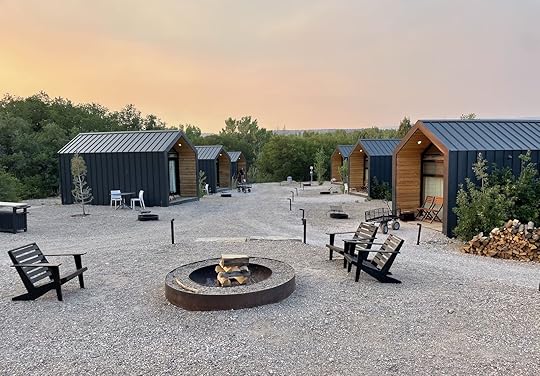
Photo: Alex Bresler
“I’ve never seen an industry that’s so typified by cheap, cheap, cheap,” Tate told us. “Everything you read is about how to go on an RV trip and spend less money, and finding a place to park is a big part of that. This is really designed to appeal to people who want a much better RV park experience, not just a parking spot.”
The clubhouse is the nucleus of the property where many guests choose to eat, lounge, work, and otherwise spend their downtime. There are communal books and board games, and on the night I arrived, a local musician was playing an acoustic set while onlookers sipped beer, wine, and mix-it-yourself cocktail kits from the general store.
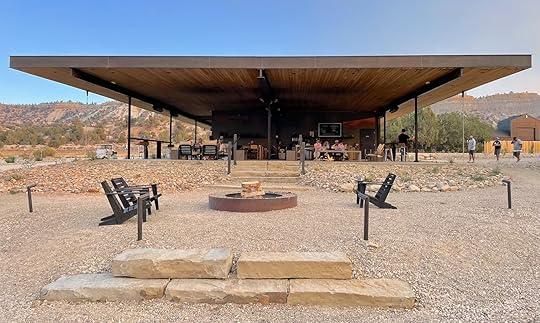
Photo: Alex Bresler
Between the clubhouse and the general store is the first block of bathrooms, which is a point of pride for the Yonder team. Having heard countless complaints about the bathrooms at most RV parks, Tate knew that he wanted to create a spa-like atmosphere with amenities such as luxury bath products, hairdryers, flat irons, and makeup remover. A second bathroom block on the other side of the property has outdoor showers with desert landscaping befitting a home patio and overhead heaters for optimal comfort.
Flippant as it may sound, Yonder’s outdoor showers encapsulate its essence: an immersive nature experience that both purposefully disappears against the rugged backdrop of the national monument and stands out as an oasis of comfort amid Utah’s hot, craggy, dusty desert. (Yonder also has an answer for the heat and dirt in the form of a large swimming pool and on-site laundry facility.)

Photo: Kim + Nash Finley
Before Tate bought the plot in 2018 it belonged to the Shooting Star RV Park, which came with its own drive-in movie theater. The drive-in is still there, although the DVD player that the old park used to show movies has been upgraded with a projector and FM transmitter. The Yonder team also drove in a small fleet of classic cars to add to the existing collection — there are now nine total — and set up a concession stand with snacks like popcorn and Milk Duds for the ultimate viewing experience. Guests staying in the cabins and Airstreams closest to the screen can also borrow listening devices to watch from their patios. Family-friendly movies — during my three-night stay the lineup was The Sandlot, Back to the Future, and Cloudy with a Chance of Meatballs — are screened every evening around dusk.

Photo: Kim + Nash Finley
The drive-in is not the only amenity at Yonder with a built-in experience. All of the cabins and Airstreams come with private grill grates that guests can use to prepare meal kits that are available for purchase at the general store. S’mores are roasted nightly over the communal fire pits at the clubhouse, and personal s’mores kits are also on offer for private roasting.
Tate can’t take credit for the rest of the experiences many Yonder guests are after. Located off a stretch of the Highway 12 that’s been designated a Scenic Byway, the property lies midway between Bryce Canyon and Capitol Reef National Parks in the heart of slot canyon country. Hikes such as Spooky and Pekaboo Gulch, Lower Calf Creek, and the Escalante River Trail have put this pocket of southern Utah on the map for anyone who loves road trips and the great outdoors.
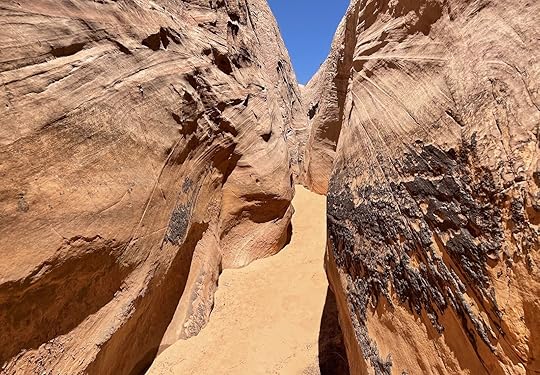
Photo: Alex Bresler
You might think that building a glampy RV park in the middle of an increasingly trafficked part of southern Utah is a recipe for lodging costs that no real outdoorsperson would be willing to pay. Not so. For the level of amenities guests are offered, Yonder’s prices are competitive with other glampsites and RV parks in Utah. Campervan sites start at $59 per night, RV sites start at $129 per night, cabins start at $169 per night, and Airstreams start at $209 per night.
I have yet to visit an RV park in an actual RV. But at half the cost of staying at one of the fixed accommodations, with all the same perks, Yonder’s RV and campervan sites strike me as a pretty great deal. Heck, I’d come back as a vanlifer for those outdoor showers alone. 
Matador Network's Blog
- Matador Network's profile
- 6 followers



